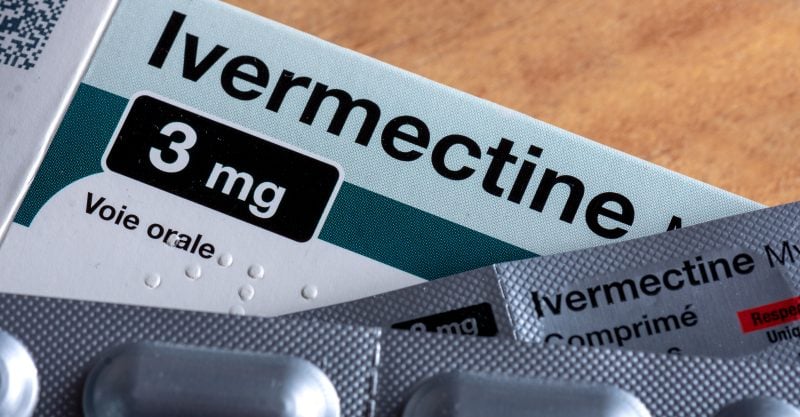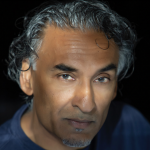WSJ Misleads Public on Ivermectin, Ignores Latest Revelations About ‘Hidden Author’ Who Undermined Its Efficacy
The Wall Street Journal this month published an article citing a flawed, unpublished study concluding ivermectin didn’t reduce COVID-19 hospitalizations. Meanwhile, the paper ignored news earlier this month that a documentary producer discovered the individual likely responsible for tanking a key, systematic review showing how ivermectin could have saved millions of lives.
Miss a day, miss a lot. Subscribe to The Defender's Top News of the Day. It's free.
New revelations surfaced this month around the suppression of ivermectin as a treatment for COVID-19.
The Frontline Covid-19 Critical Care Alliance (FLCCC) Community on March 8 lauded Phil Harper, a documentary director and producer, for his efforts to identify the unnamed individual responsible for influencing leading expert opinion on the safety and efficacy of ivermectin in treating COVID early in 2021.
The actions of this hidden hand resulted in the systematic and tragic dismissal of a powerful remedy that could have saved millions of lives across the world.
Before we dig deeper into Harper’s discovery, let’s look at the latest attempt by a mainstream media outlet to discredit ivermectin’s utility in treating COVID
The Wall Street Journal misleads the public
The Wall Street Journal on March 18 published an article with this headline: “Ivermectin Didn’t Reduce Covid-19 Hospitalizations in Largest Trial to Date.”
Headline readers will easily reach the seemingly obvious conclusion: Drs. Anthony Fauci and Rochelle Walensky, along with the National Institutes of Health (NIH) and the Centers for Disease Control and Prevention, were right all along.
However, for those who read beyond the headline and first few paragraphs, the story begins to morph.
The headline clearly states the trial in question was the largest to date. However, this is not the case — as the article’s author, Sarah Toy, explains early in the piece:
“The latest trial, of nearly 1,400 Covid-19 patients at risk of severe disease, is the largest to show that those who received ivermectin as a treatment didn’t fare better than those who received a placebo.”
This wasn’t the largest trial to date — it was only the largest trial to date among the subset of trials that have shown no benefit of ivermectin.
Was this an oversight? Or was it a deliberate attempt to confuse the 42 million readers of The Wall Street Journal’s digital content?
Putting aside the possible intention to mislead, it is impossible for a study to definitively prove that no effect exists. This is what is referred to in science as the null hypothesis, meaning an intervention has no effect.
It is entirely possible that a study may demonstrate no measurable effect. It is quite a different thing to prove that that same intervention will not have an effect under any circumstances.
To put it flatly, one cannot prove that something doesn’t exist.
Toy chose not to mention the 81 separate studies — involving a combined 128,000 participants — that demonstrated an average efficacy of 65% for several different outcomes.
She also did not mention the 22 studies — involving nearly 40,000 people — around the outcome in question, hospitalization. Those studies showed an average efficacy of 39%.
The Wall Street Journal did not cite the study that was the focus of its article, because the study hasn’t yet been published. Yet Toy assured readers the study has been “accepted for publication in a major peer-reviewed medical journal.”
With no paper to cite, the journal instead quoted Edward Mills, one of the study’s lead researchers and a professor of health sciences at Canada’s McMaster University in Hamilton, Ontario:
“There was no indication that ivermectin is clinically useful.”
Of note, all participants in this prospective study were drawn from one of 12 clinics in the Minas Gerais region of Brazil. All were at risk for severe disease due to underlying comorbidities.
The dosing regimen was unspecified and COVID diagnosis was made through rapid testing only.
The real story behind ivermectin and COVID-19
The Wall Street Journal article is yet another widely read piece that cherry-picks studies that purportedly show no benefit while categorically ignoring the mounting evidence to the contrary.
The systematic suppression of ivermectin’s efficacy against COVID has been well documented by The Defender here, and in Robert F. Kennedy, Jr.’s New York Times bestselling book, “The Real Anthony Fauci.”
However, as mentioned at the outset of this article, FLCCC this month shed more light on the mystery behind Dr. Andrew Hill’s stunning decision early in 2021 to recommend that more research would be required to support the use of ivermectin to treat COVID patients — despite the enormous amount of data suggesting otherwise.
It was Hill’s so-called systematic review that effectively scuttled the World Health Organization’s (WHO) acceptance of ivermectin as a potent COVID remedy.
Other governing medical bodies, including the NIH, the U.S. Food and Drug Administration and the UK’s Medicines and Healthcare products Regulatory Agency immediately fell in line behind the WHO’s stance.
Hill had been a strong advocate for ivermectin in the closing months of 2020. In October 2020, he was tasked by the WHO to present the findings on ivermectin.
Hill, Dr. Tess Lawrie, director of The Evidence-Based Medicine Consultancy, Ltd. and other researchers were collaborating to publish their findings in early 2021. Those findings would definitively conclude that ivermectin could and should be used to treat COVID at all stages of the disease.
On Jan. 18, 2021, days before the planned publication of this joint effort, Hill chose to independently release his findings on preprint servers. He concluded the opposite of what he and others had found through their research:
“Ivermectin should be validated in larger appropriately controlled randomized trials before the results are sufficient for review by regulatory authorities.”
His shocking reversal of opinion drew immediate consternation from members of FLCCC and Lawrie. Soon after Hill released his paper, he spoke with Lawrie in a recorded zoom meeting that raised more questions.
Oracle Films released an informative and succinct video that contextualizes the pivotal conversation between Hill and Lawrie.
When Lawrie confronted a squirming Hill, Hill eventually admitted the conclusions in his analysis had been influenced by Unitaid, a quasi-governmental advocacy organization funded by the Bill & Melinda Gates Foundation and several countries — France, the UK, Norway, Brazil, Spain, the Republic of Korea and Chile — to lobby governments to finance the purchase of medicines from pharmaceutical multinationals for distribution to the African poor.
As Kennedy, chairman and chief legal counsel for Children’s Health Defense, writes in his book:
“Unitaid gave $40 million to Andrew Hill’s employer, the University of Liverpool, four days before the publication of Hill’s study. Hill, a Ph.D., confessed that the sponsors were pressuring him to influence his conclusion.
“When Dr. Lawrie asked who was trying to influence him, Hill said, ‘I mean, I, I think I’m in a very sensitive position here …’”
Who was the Unitaid member who impelled Hill to change his tune?
Thanks to the sleuthing by Phil Harper, producer, director and author of a Substack newsletter under the moniker “The Digger,” we may have an answer.
The hidden hand that muzzled ivermectin
Harper explained his remarkable discovery, writing:
“Sometimes information can be sitting right underneath your nose. Many suspected that ‘persons unknown’ had altered the paper, but we didn’t know who. Who are these people who nudge science into profitable shapes?!”
In another Substack article, Harper explained how he was able to identify crucial changes made in the days prior to the study’s distribution by comparing it to a previous version that was emailed to Lawrie. This original version was not made public.
The changes were subtle but clearly designed to weaken the conclusions of the analysis. Even more suspicious was the deletion of Unitaid’s financial contribution in the form of an “unrestricted research grant” from the funding declaration portion of the paper.
By examining the metadata attached to the PDF document Hill submitted to several preprint servers, Harper discovered that the author (as indicated in the metadata) of the paper was Andrew Owen, a professor of pharmacology & therapeutics and co-director of the Centre of Excellence in Long-acting Therapeutics (CELT) at the University of Liverpool.
Harper continues:
“His authorship is tied programmatically to the document, meaning a device or software programme registered to the name Andrew Owen saved off the document as a PDF. When exporting a PDF, Microsoft Word automatically adds title and author information.
“Unless someone used his computer, Andrew Owen has his digital fingerprint on the Andrew Hill paper. A paper we have very strong reason to believe was altered by ‘people’ at Unitaid.”
Owen is also a scientific advisor to the WHO’s COVID-19 Guideline Development Group. Just days before Hill’s original paper was to be published, a $40 million grant from Unitaid, the paper’s sponsor, was given to CELT. Owen is the project lead for that grant.
According to Harper:
“The $40 million contract was actually a commercial agreement between Unitaid, the University of Liverpool and Tandem Nano Ltd (a start-up company that commercializes ‘Solid Lipid Nanoparticle’ delivery mechanisms) — for which Andrew Owen is a top shareholder.”
Owen is not listed as an author of the analysis, yet his digital fingerprint is on its last-minute revisions.
Instead, Hill listed all the authors of the studies that his systematic review was critiquing as co-authors of the review itself. This is a striking departure from standards of a systematic review, as it undermines the purpose and objectivity of such an analysis.
Conclusion
It is difficult to summarize this situation without diluting the impact of what has been presented here.
Mainstream media sources such as The Wall Street Journal continue to publish unbalanced and poorly researched articles while enormous stories are unfolding behind the wall of corporate-funded propaganda.
Hill’s own opinion, when untrammeled by hidden influence, suggested 75% of COVID deaths could have been prevented by using ivermectin as treatment.
The “hidden hands” of profit-driven operatives are taking an enormous toll on humanity through their manipulation of public and scientific opinion.
In the end, the public must decide when enough is finally enough.
The views and opinions expressed in this article are those of the authors and do not necessarily reflect the views of Children's Health Defense.

